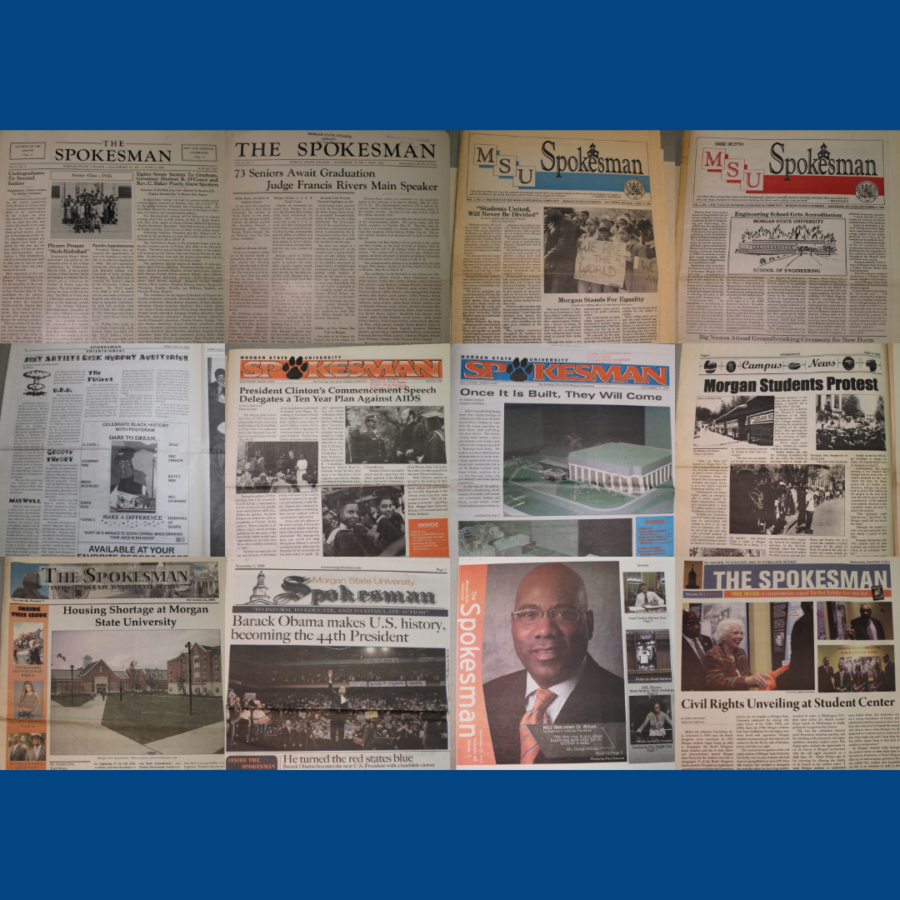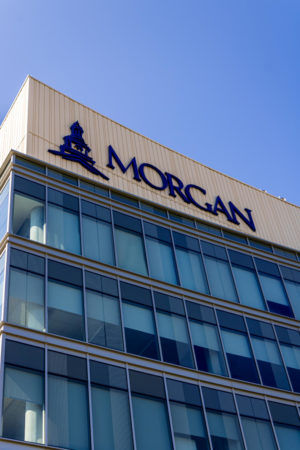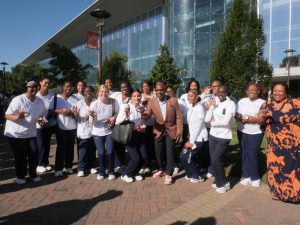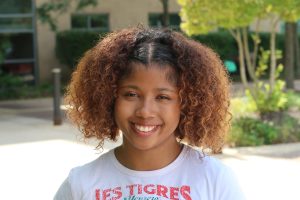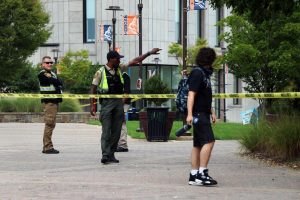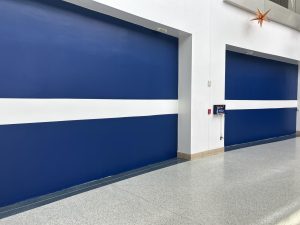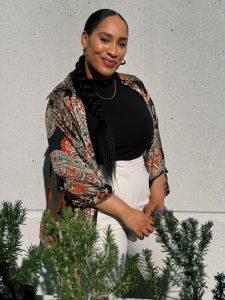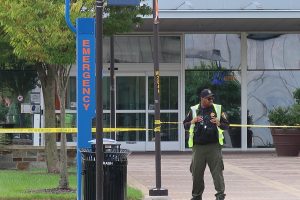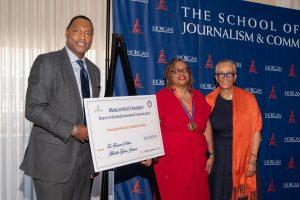Black History Month: 80 Years of Spokesman Coverage
As the Spokesman enters its 80th year of publication, the newspaper created a compilation of its top stories.
The Spokesman has covered university news for decades — including the student protest of the ’90s.
February 25, 2022
As an 80-year-old publication, the Spokesman’s archives contain a wide range of news coverage that captures the history of Morgan State University.
Spokesman’s archives, compiled by Ida Jones, university archivist, are most prevalent during the 1990s, but some collections include historic copies from the beginning of the publication in the 1940s.
Over the years, the Spokesman has covered university news such as student protests, university commencements, presidential speeches and cultural events.
Review some of the top Spokesman stories found in the university’s archives at the Beulah M. Davis room in the Earl S. Richardson library.

January 1944: The earliest copy of the Spokesman in Morgan’s archives dates back to 1944. At the time, students were on strike and opposing the student council after two male students were dismissed from the university for violating visitation rules in a women’s dormitory. The 1944 paper also highlights the previous establishment of a dormitory canteen in Tubman House. A larger canteen for the entire student body is now located in the University Student Center.
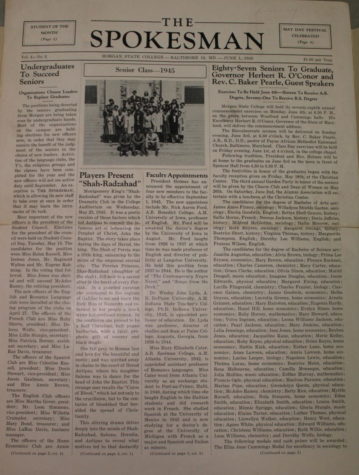
June 1945: 87 seniors completed their matriculation at Morgan State College in 1945. 16 students received their bachelor of arts degree and 71 students received bachelor in science degrees. Over the past 80 years, graduation rates have grown as well as the university’s enrollment rates.
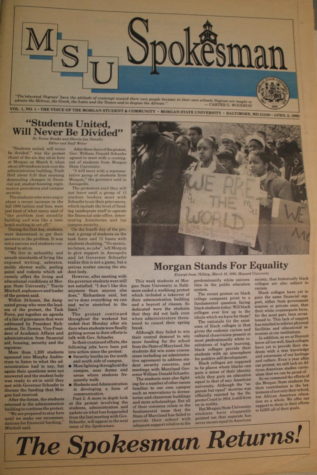
April 1990: Student protests at HBCUs date back several generations ago and were very prevalent at Morgan during the 1990s. Morganites were protesting demands from their own university and the state of Maryland. Over 200 students held a six-day sit-in inside of an administration building and demanded changes with financial aid, class registration and campus security. The protest garnered so much attention across the state that the former governor of Maryland William Donald Schaefer agreed to meet with students about their concerns.
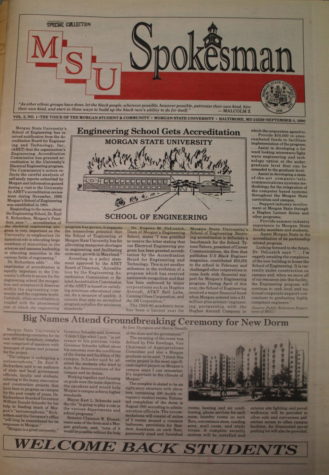
September 1990: Two large events made news in this Spokesman edition starting with the accreditation for the engineering school and the groundbreaking ceremony for Blount Towers. The School of Engineering’s electrical engineering program received its accreditation from the Accreditation Board for Engineering and Technology six years after its establishment. Additionally, the university held a groundbreaking ceremony for its newest women’s dormitory, Blount Towers, that was set to open in August 1991. The building’s namesake, Senator Clarence W. Blount, Governor William Donald Schafer, Mayor Kurt Schmoke and other public figures attended the ceremony.
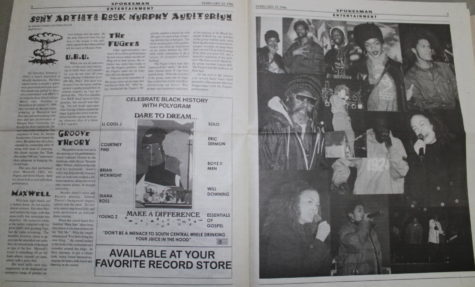
February 1996: Sony Music launched a music tour in collaboration with the nation’s historically black colleges and universities. The music tour brought some of the top Black music artists of 1996 to Morgan’s campus as well as Morehouse College, Hampton University and Howard University. The Fugees, Maxwell, U.B.U. and Groove Theory performed in the Murphy Fine Arts Center in the HBCU music tour.
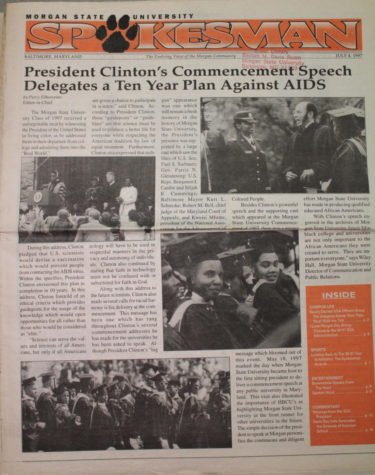
July 1997: Former President Bill Clinton delivered the Spring 1997 commencement speech at Morgan. In his speech, Clinton addressed the ongoing AIDS epidemic and his administration’s plans to help prevent contraction of the virus. On this day, Clinton became the first active president to deliver a commencement speech at Morgan. Clinton’s speech was joined by ELijah E. Cummings, former Mayor Kurt L. Schmoke, and Congressman Kweisi Mfume.
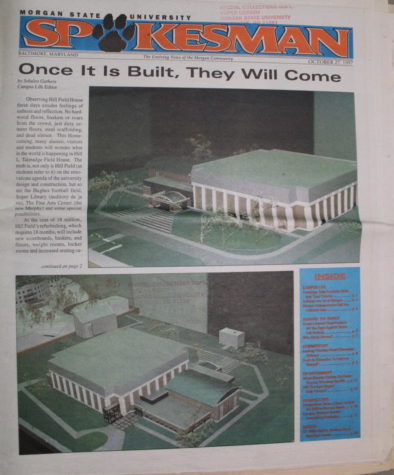
October 1997: Similar to today’s Morgan experience, building construction often occurred on the university’s campus. In the fall of 1997, the Talmadge L. Hill Field House was refurbished, along with the construction of the Hughes Memorial Stadium, Soper Library and the Murphy Fine Arts Center. For $18 million, the refurbishing of the Hill Field House included new scoreboards, basketball hoops, flooring, weight room and increased seating arrangements.
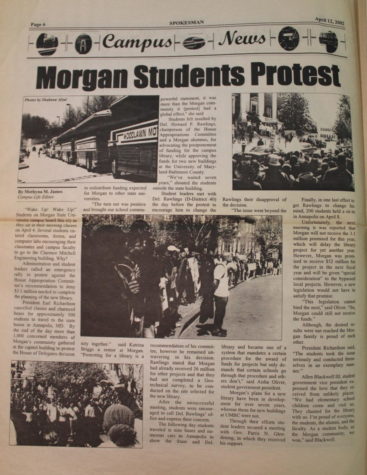
April 2002: Protests at Morgan were an ongoing reoccurrence, but this time, the Morgan community approached Maryland’s House of Delegates to demand funding that was intended for the university, but planned to go elsewhere. Over 1,000 people traveled to the state house in Annapolis, Md. to protest the denial of $3.1 million to complete the construction of a new library. After a sit-in with 200 people, the House Appropriation Committee decided against granting Morgan the proper funding. The denied funding further pushed back the university’s plans to develop a new library, which is now known as the Earl S. Richardson library.
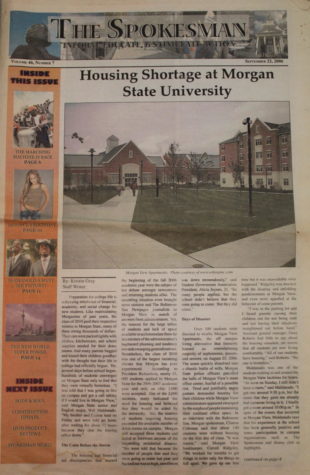
September 2006: Protests are not the only aspect of Morgan with a common history as Morgan’s ongoing housing shortage goes back to 2006. With its largest incoming freshman class at the time, the number of housing applications exceeded the number of available spaces on-campus. Over 100 students that originally applied for on-campus housing were directed to Morgan View apartments for their housing assignments.
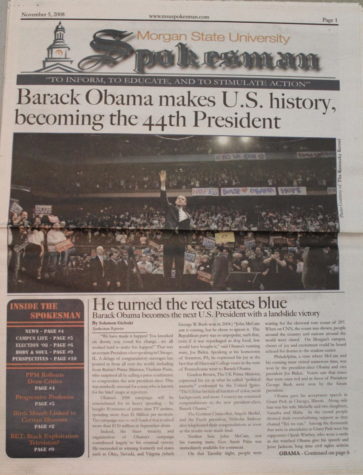
November 2008: In 2008, the United States elected Barack Obama as its first-ever African American president. The Spokesman released a print edition the day after the election, solely dedicated to the 44th president’s victory. As most college students were first-time voters, the Spokesman captured the reactions and excitement from the election results.
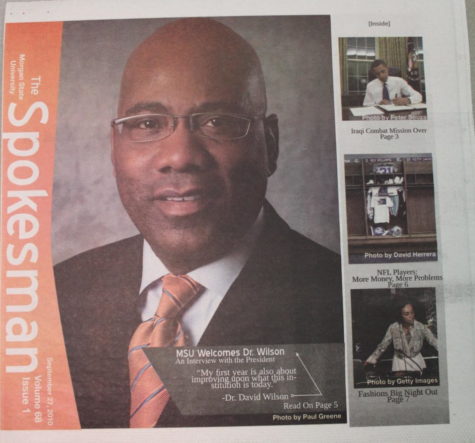
September 2010: President David Wilson began his tenure at Morgan State University in 2010 as the 10th president of the university. Throughout his time at Morgan, the university has reached new heights such as its elevation to a R2 research classification, the highest graduation rates in Morgan’s history, over $1 billion towards campus construction within the next 10 years and more. In the first year of his presidency, Wilson sat down with the Spokesman for a one-on-one interview.
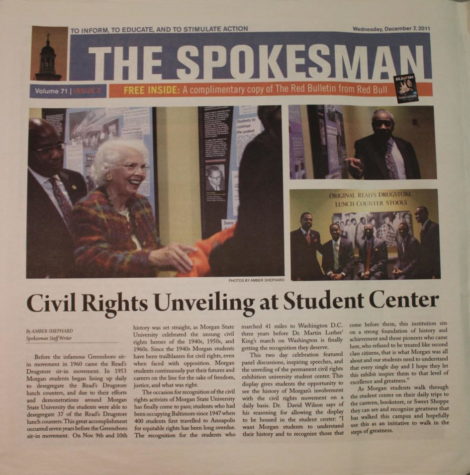
December 2011: The Civil Rights Movement display in the University Student Center was brought to campus in 2011. Although the display highlights the movement as a whole, it also shows the direct connection between the movement and Morgan State University. In the early 1950s, Morgan students fought to desegregate nearly 40 lunch counters at Read’s Drugstores in Northwood Commons. Their work was honored with the movement exhibit that displays the exact sit-in counter from one of the drugstores.
In 2012, the Spokesman transitioned from print publication to digital-only, publishing all stories online.
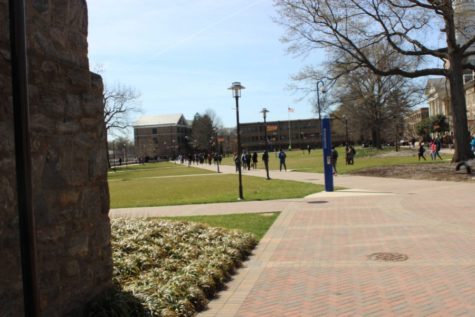
May 2016: Morgan State recognized as a National Treasure
The National Trust for Historic Preservation officially declared Morgan a National Treasure just a year shy of its sesquicentennial anniversary. The organization preserves historic landmarks across the nation and actively works to fund HBCUs. Morgan was the first and currently remains the only HBCU campus recognized as a National Treasure.
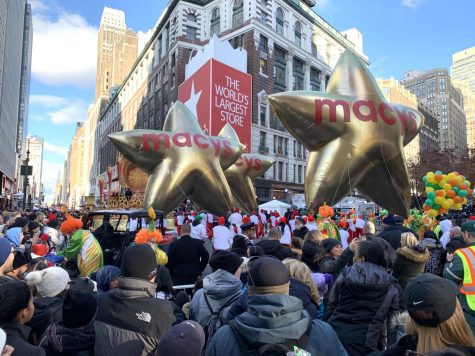
November 2019: Morgan band steals NYC, Macy’s parade with historic performance
In 2019, the Magnificent Marching Machine performed in the Macy’s Thanksgiving Day Parade. Morgan’s band made history as the first HBCU to perform in the annual parade in New York City. The band has since performed with the Baltimore Ravens marching band and most recently at NBA All-Star Weekend in the HBCU Classic game.
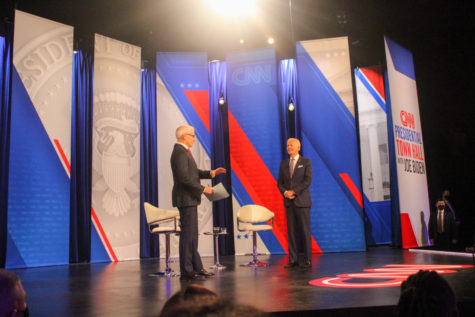
October 2021: Biden addresses his response to voting rights, police brutality and HBCU funding
The Spokesman covered a CNN presidential debate in Baltimore with President Joe Biden. Hosted by Anderson Cooper, Biden discusses several topics headlining his first year of presidency including voting rights, HBCU funding, police brutality and other national topics.

